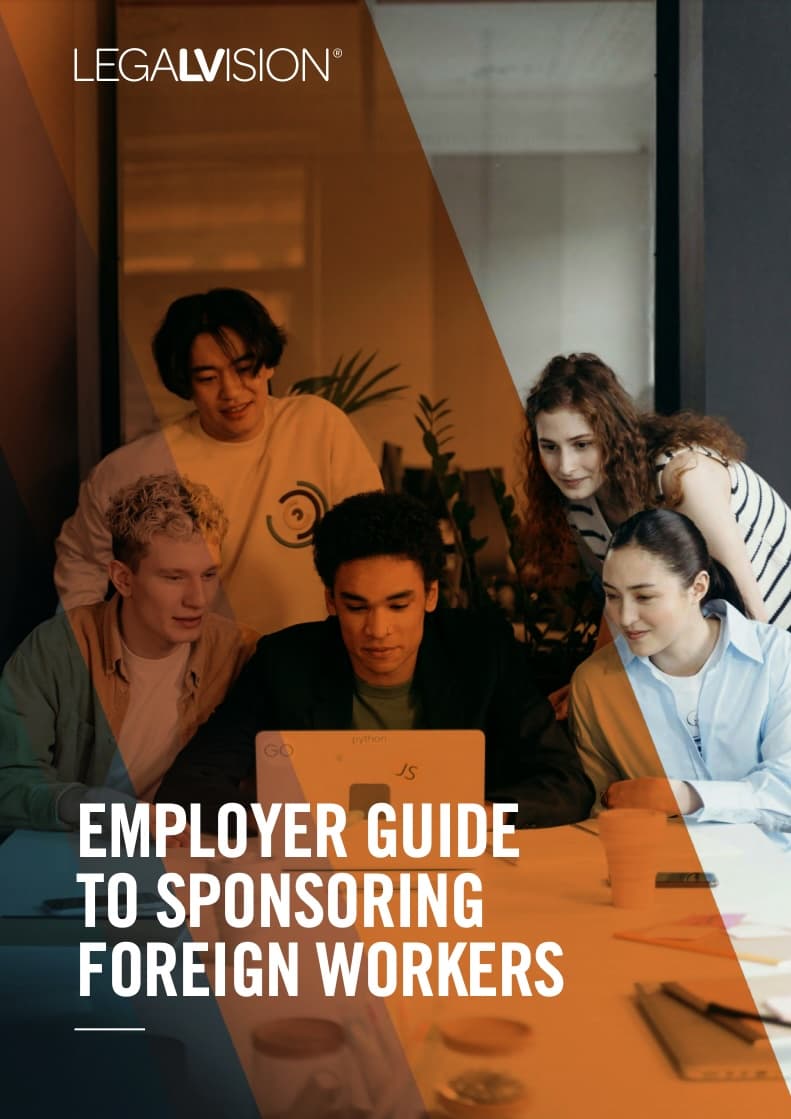Table of Contents
As a Subclass 482 visa holder, the recent changes to the law now enable you to seek permanent residence in Australia. Historically, only Subclass 482 visa holders in the Medium-term stream could access permanent residence via the Subclass 186 Temporary Residence Transition (TRT) stream. On 1 July 2022, in response to the increasing demand for skilled labour and the declining number of temporary visa holders in 2021 due to the COVID-19 pandemic, a limited pathway to permanent residence was created for Short-term stream Subclass 482 visa holders who were in Australia for at least 12 months during the pandemic between 1 February 2020 and 14 December 2021. However, those who arrived in Australia on a Subclass 482 Short-term stream from December 2021 were unable to access this pathway.
On 25 November 2023, the Migration Amendment (Expanding Access to Temporary Residence Transition Stream) Regulations 2023 (the Regulations) amended the Migration Regulations 1994 (the Migration Regulations) to expand pathways to permanent residence for all Subclass 482 visa holders, regardless of what stream they were nominated in.
These transformative changes mark a pivotal moment for all 482 visa holders. These modifications apply to the:
- Temporary Skilled Shortage Subclass 482 visa;
- Employer Nomination Scheme (ENS) Temporary Residence Transition (TRT) stream (Subclass 186); and
- Regional Sponsored Migration Scheme (RSMS) Temporary Residence Transition (TRT) stream (Subclass 187).
They eliminate various constraints and introduce new prospects for individuals aspiring to secure permanent residency (PR) opportunities.

Sponsoring overseas workers as an Australian business is complicated. Let us simplify it for you with this free employer guide.
What Do The Changes Entail?
Let us explore how changes to the law affect the nomination criteria and visa criteria.
Subclass 482
Previously, subclass 482 visa holders in the short-term stream could not apply for a third 482 visa onshore. From 25 November 2023, subclass 482 visa holders in the short-term stream will be able to apply for a third 482 visa onshore.
Subclass 186 and 187 (TRT stream) Nomination Criteria
| Nomination criteria | Pre 25 Nov 2023 | From 25 Nov 2023 |
|---|---|---|
| Which visa to hold at time of application? | + Subclass 457 in force before 18 March 2018; + Subclass 482 in medium-term stream; + Person specified in LIN 22/038; and + BV associated with the above visas. | + Subclass 457; + Subclass 482; and + BV associated with the above visas. |
| Period holding eligible visa | + 3 years out of 4 years. + 2 years out of 3 years (for specified 457 holder). | 2 years out of 3 years for all cohorts. |
| Eligible occupation | + Occupation on MTSSL and ROL. + No occupation list for person specified. | + No occupation list. + Occupation must correspond to an eligible 4 digit ANZSCO code. |
| Period of employment | + 3 years out of 4 years. + 2 years out of 3 years (for specified 457 visa holder). | 2 years out of 3 years for all cohorts. |
The practical effect of these legislative changes permits subclass 482 visa holders nominated in any eligible ANZSCO occupation code to access permanent residence via the subclass 186 and 187 TRT streams. Unfortunately, this does not apply to subclass 482 visa holders nominated in the occupation code 070499 under a relevant labour agreement or designated area migration agreement (DAMA). This cohort can still access permanent residence after three years under the relevant labour agreement or DAMA.
Subclass 186 and 187 TRT Visa Criteria
The changes explicitly refer to the following definitions in the assessment of the relevant age exemption criteria:
| Age exemption | Pre 25 Nov 2023 | From 25 Nov 2023 |
|---|---|---|
| Legacy 457 workers (only 186 TRT) | Refers to a person who: + held a subclass 457 visa on or after 18 April 2017; and + was in Australia for at least 12 months between 1 February 2020 and 14 December 2021. | Refers to a person who: + held a Subclass 457 (Temporary Work (Skilled)) visa on or after 18 April 2017; + was in Australia for at least 12 months between 1 February 2020 and 14 December 2021; and + applied for the Subclass 186 (Employer Nomination Scheme) visa on or before 30 June 2024. |
| Regional medical practitioner applicants | Refers to a person who for three years: + held a 457 or 482 visa; + was nominated as a medical practitioner; + was employed in a designated regional location for 2 years; and + earned equivalent to or higher than the FWHIT. | Refers to a person who for two years: + held a 457 or 482 visa; + was nominated as a medical practitioner; + was employed in a designated regional location; and + earned equivalent to or higher than the FWHIT |
| Subclass 457/482 worker | Refers to a person who for three years: + held a 457 or 482 visa; + was nominated in the same occupation and employed by the same employer; and + earned equivalent to or higher than the FWHIT. | Refers to a person who for two years: + held a 457 or 482 visa; + was nominated in the same occupation and employed by the same employer; and + earned equivalent to or higher than the FWHIT. |
| Subclass 457/482 coronavirus concession workers | Refers to a person who for three years: + held a 457 or 482 visa; + was nominated in the same occupation and employed by the same employer; and + whose earnings or employment was affected by covid conditions. | Repealed. |
Cohorts that satisfy the definition of Legacy 457 Workers must lodge their 186 TRT visa application before the legislative provisions expire on 30 June 2024.
Are More Reforms On the Way?
The Migration Review Report proposed a number of reforms designed to overhaul the employer sponsored visa program.
These include:
- adopting a risk-based assessment for temporary skilled migration:
- light touch high salary cohort;
- mid-touch (salary between cohort 1 and new TSMIT); and
- lower wage cohort where there is persistent shortage and risk of worker exploitation;
- reviewing and reforming the skilled occupation list and its correlation to the archaic ANZSCO directory;
- removing the requirement for labour market testing (LMT);
- allowing sponsored workers/employees to change employers and increase the timeframe to 6 months; and
- improving monitoring and compliance to prevent migrant worker exploitation, which may include migrant workers receiving training about their rights as employees and coordination with other Government agencies such as the ATO. The Migration Amendment (Strengthening Employer Compliance) Act 2023 is currently before the Senate and awaiting royal assent.
Key Takeaways
The recent changes from the Migration Amendment (Expanding Access to Temporary Residence Transition Stream) Regulations 2023 expanded the pathways to permanent residency (PR) for all Subclass 482 visa holders, regardless of what stream they were nominated in. As such, if you are a Subclass 482 visa holder seeking PR, you should obtain advice on your next steps.
If you need help with your visas, our experienced immigration lawyers can assist as part of our LegalVision membership. For a low monthly fee, you will have unlimited access to lawyers to answer your questions and draft and review your documents. Call us today on 1300 544 755 or visit our membership page.
We appreciate your feedback – your submission has been successfully received.











